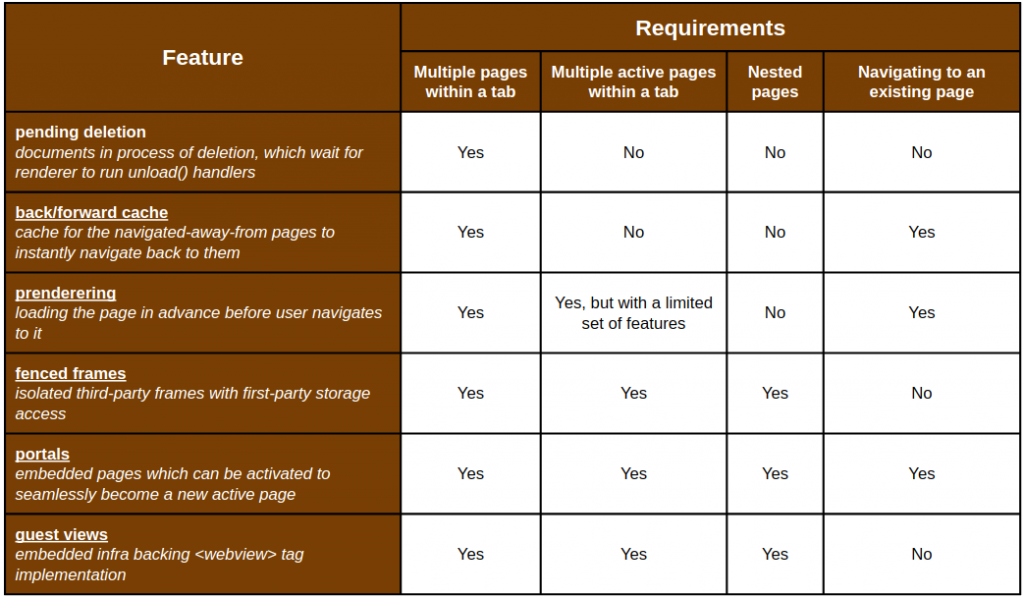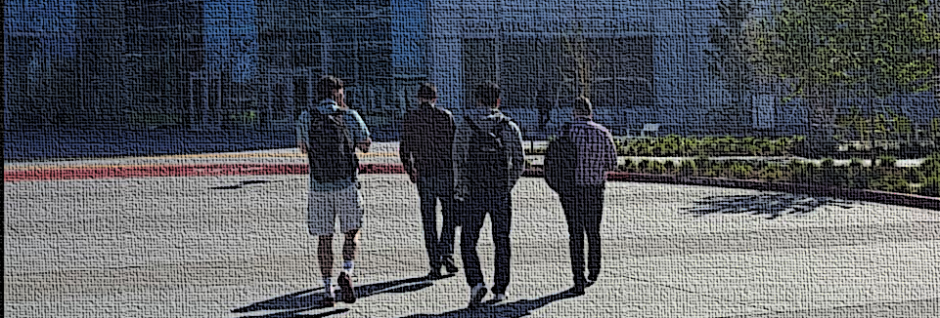This article is written by referring to the Multiple Page Architecture document.
Motivation
According to the Google Chromium team, some years ago it turned out that the BFCache(Back/Forward cache), Portals, Guest Views, and Prerender faced the same fundamental problem of having to support multiple pages in the same tab, but were implemented with different architecture models. BFCache and pending deletion documents were implemented with a Single-WebContents model. On the other hand, Portals and Guest Views were implemented with a Multiple-WebContents model. After extensive discussions between the Chrome Security Architecture team, the BFCache team, the Blink Architecture team, the Portals team, and others, they concluded that BFCache and Portals should converge to a single shared architecture. This is crucial to minimize the complexity of writing browser features on top of and within and minimize the maintenance cost across the codebase.
Goal
The goal of multiple-page architecture is to enable projects including BFCache, Portals, Prerendering, and FencedFrames to minimize the complexity exposed to the browser features. Specifically, Multiple Page Architecture is to- Enable one WebContents to host multiple(active/inactive, visible/invisible) pages
- Allow navigating WebContents to an existing page
Design Overview
Let’s take a look at a high-level design briefly. To apply the MPArch to Chromium, we have to change the core navigation and existing features. First, we need to make the core navigation provide the ability to host multiple pages in the same WebContents, allow one page to embed another, and allow WebContents to navigate to existing pages.In particular, this includes,
- Allow multiple FrameTrees to be created in the given WebContents in addition to the existing main one
- Add a new navigation type, which navigates a given FrameTree to an existing page. (For example, BFCache will use it for history navigation restoring the page from the cache. Prerendering will use it to instantly navigate to a prerendered page.)
- Modify RenderFrameHost to avoid knowing its current FrameTreeNode/FrameTree to allow the main RenderFrameHost to be transferred between different FrameTreeNodes.
Igalia Participation
As we’ve seen briefly so far, the MPArch project is a significant Chromium architecture change that requires a lot of modification of Chromium overall. The Igalia team began to participate in the prerendering task first in the MPArch project in April 2021. We had mainly worked on the prerendering contents restriction as well as the long tail of fixes for MPArch-related features. After finishing the prerendering and long tail fixes of MPArch-related features, we started to work on the FencedFrame which is a target of the MPArch projects since September 2021. The Igalia team has merged over 550 patches for MPArch since April 2021 so far.References
[1] Multiple Page Architecture[2] Multi Page Architecture (BlinkOn 13)
[3] Prerendering
[4] Prerendering contents restriction
[5] Fixing long tail of features for MPArch
